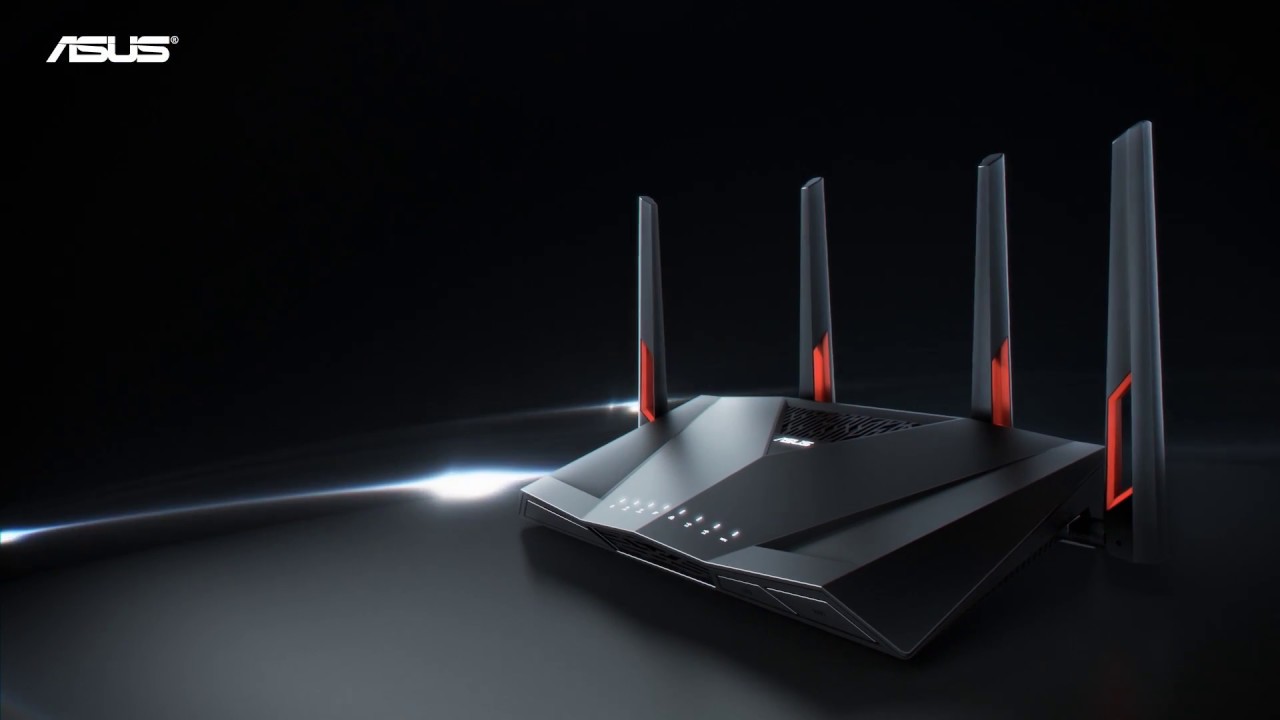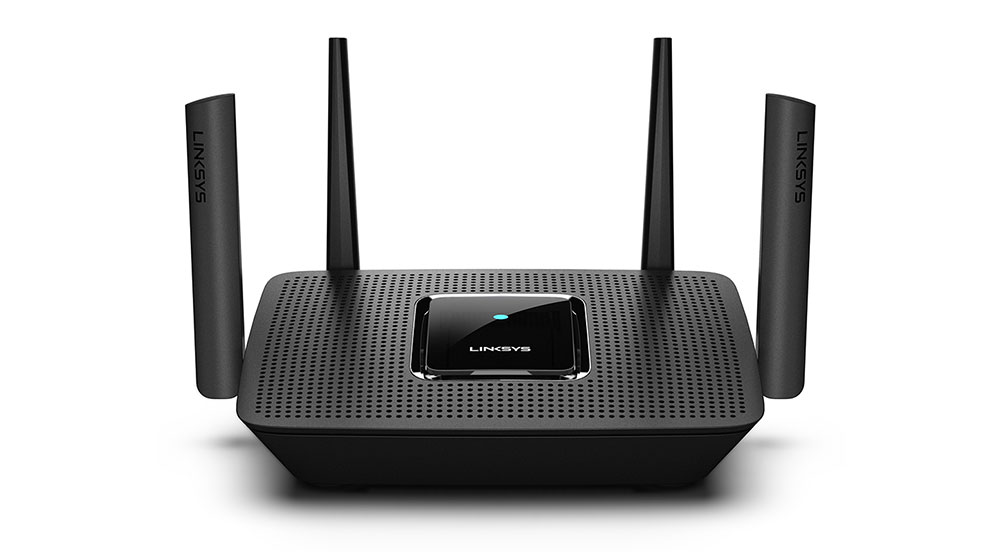But having many wireless devices consuming big chunks of data also presents other problems; interference and congestion. Like when you have many cars on the roads at rush hour. Traffic jam happens and you get home late. Same thing happens when your devices connect to your wireless router at the same time. Router vendors such as Asus, Linksys, Netgear, D-link have thought about these challenges. The solution is to create wireless WiFi routers that use not just one, but two or even three frequency bands. By pushing data and connecting different wireless devices via different radio streams, we can increase bandwidth while connecting more devices. It’s a bit like having different lanes on the same road. Related post: The updated guide to WiFi wireless network connectivity
Single-Band routers work on 2.4Ghz
The Good
Single-band routers are ubiquitous which means they connect to the largest variety of wireless devices.Single-band routers are very cheap.Have longer range since lower frequency of 2.4 Ghz can penetrate walls, doors better.
The bad
Suffer from interference give the large number of 2.4Ghz compatible devices.Relatively slower speeds compared to dual and tri-band routers.May not support some newer devices
At first when the first WiFi standard, IEEE 802.11a/b was released back in 1999, router vendors had to comply with the specification by creating products that used the 2.4Ghz frequency band at 11Mbps and later on 54Mbps with WiFi 802.11g. These devices that comply with WiFi 802.11a/b/g connect to Single-band routers. Single band because only a single frequency band of 2.4Ghz is used. There are still very many single band routers on the market. In fact they are still the majority right now which means single-band routers can support a wide range of devices. The other advantage with these router (which includes WiFi routers, MiFis, 3/4G routers, extenders etc) is that they are relatively low cost ranging from anything from a measly $10 to as much as $100. Single-band routers are quite rare these days. They are mostly old routers which are mostly out of stock at major retailers online. Related post: How a MiFi really works, why and how to buy one With many devices using just a single frequency band, there was a lot of interference among several WiFi products and also millions of other Bluetooth devices, microwave oven, cordless phones, amateur radio etc. Also single-band routers will not be able to support the latest wireless devices that operate in the 5Ghz and 60Ghz bands.
Dual-band Routers work on 2.4Ghz and 5Ghz bands
The Good
Support twice as much bandwidth as single-band routers.Can connect to latest wireless device such as iPhone 6/7/8/X/XR, Galaxy S6/7/8/10/20, LG6 and modern laptops etc.Less prone to interference thanks to two bands
The bad
Slightly more expensive than single-band routers.Dual-band under 5Ghz band have shorter range than single-band which operate in 2.4 GHz.
Then IEEE 802.11n (WiFi 4) standard was released in 2009 with a breath of fresh air. To reduce interference on 2.4Ghz and also to increase wireless speeds to at least 450 Mbps, the 802.11n specification added 5Ghz frequency band. IEEE 802.11n routers operate in both 2.4Ghz and 5Ghz band therefore maintaining backward compatibility. In fact these routers often have IEEE 802.11b/g/n inscribed to indicate this very fact. Related post: 2.4 GHz or 5 GHz: Which Wi-Fi band should you use? But when IEEE 802.11ac(now called WiFi 5) was released 2013, it pushed data transfer speeds to 1.3 Gbps on 3 spatial streams. Using MU-MIMO antenna formation which introduced a better way of handling multiple WiFi devices at once, speeds can go as fast at 2.34 Gbps (up from 1.3 Gbps) in the 5 GHz band. It’s worth noting that 802.11ac supports only 5Ghz band. But most 802.11ac routers also support 802.11b/g/n which means the router in dual-band mode is capable of handling wireless connections on both 2.4Ghz and 5Ghz bands. So Dual-band routers can handle interference much better since some wireless devices such as the latest iPhone, Samsung Galaxy and laptops can connect via 5Ghz band instead of the often congested and slower 2.4 Ghz. Related post: 802.11 ax the next WiFi standard is expected to top 10 Gb/s data transfer speeds Dual-band routers are often marketed as “AC1900” class products, meaning that they support 802.11ac as indicated by the “AC” prefix and provide an aggregate network bandwidth of 1900 Mbps – meaning, 600 Mbps from the 2.4 Ghz side and 1300 Mbps (1.3 Gbps) from the 5GHz side. Related post: How to Interpret WiFi Router Brand Names Dual-band routers are slightly more expensive than their single-band counterparts of course. You will also get shorter range with the 5Ghz band since radio waves have a hard time travelling through walls at higher frequencies.
Tri-band Routers work on 2.4Ghz and two 5Ghz bands or 60GGhz
The Good
Carry thrice as much bandwidth as single-band routers with three bands.More bands equals less interference.
The Bad
More expensive than single-band or dual-band routers.Tri-band routers through 60 Ghz have significantly shorter range than dual-band or single-band routers.
Tri-band routers supplement on Dual-band routers with an additional 5Ghz band. These routers operate with one 2.4Ghz and two 5Ghz bands to handle multiple wireless devices and provider faster data wireless connectivity of north of 4,000 Gbps on the 5 GHz band. So they carry much more bandwidth than single-band or dual-band routers. Related post: WiFi 802.11 ad vs ac: it’s a choice of speed over distance Additionally, there’s also another breed of Tri-band routers that instead of using an additional 5 Ghz band instead uses 60 Ghz band effectively utilizing 2.4Ghz, 5Ghz and 60Ghz bands at the same time. These routers comply with WiFi 802.11ad standard aka WiGig which operates in the 60Ghz range. Single-band routers are cheap and popular, but can’t not support some of the latest wireless devices which support 5Ghz. The industry is now moving towards dual-band routers which support two frequencies, more bandwidth and can connect modern wireless devices. But those who wish to be on the cutting edge and have higher bandwidth needs might want to opt for Tri-band routers instead.





